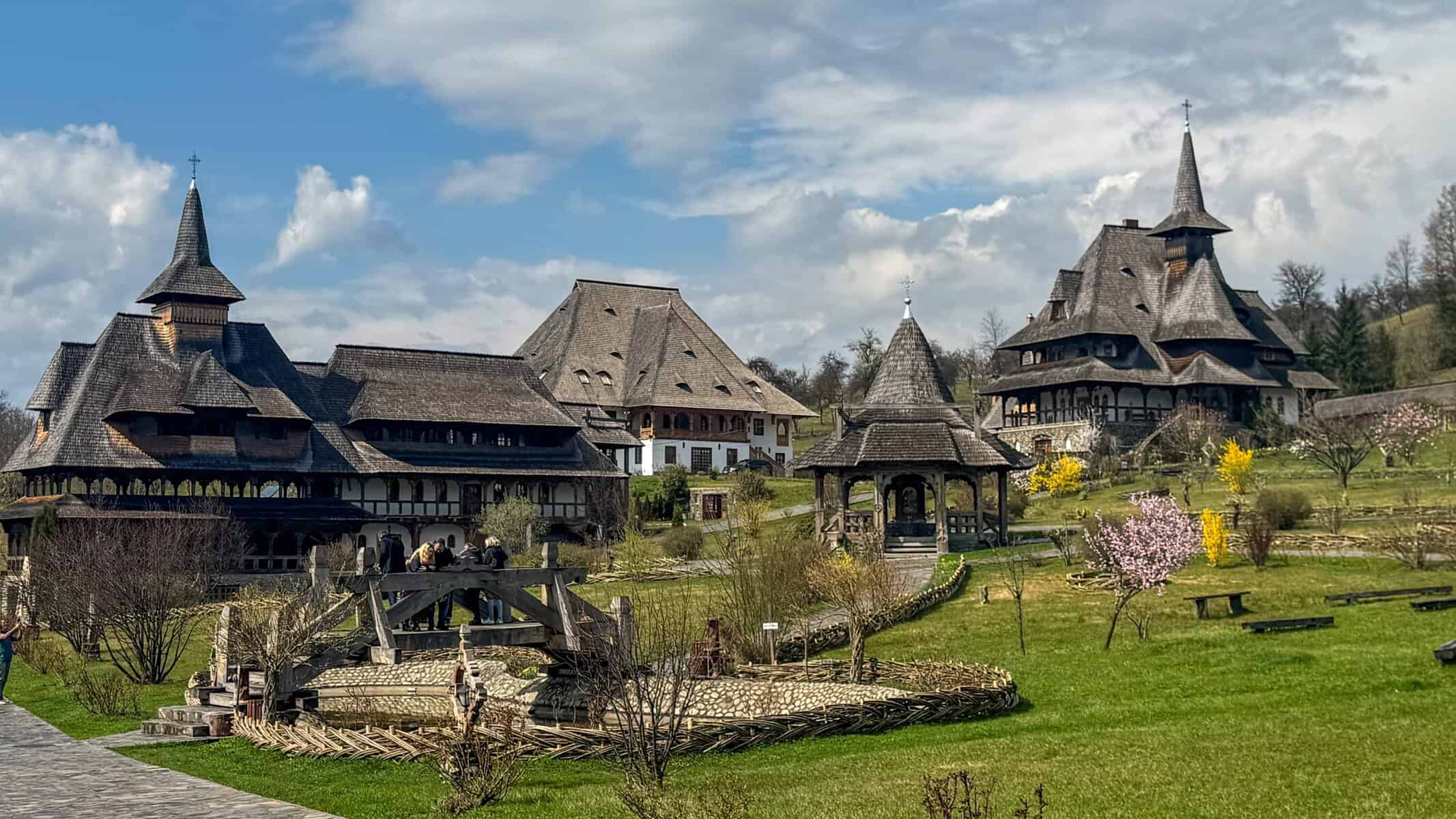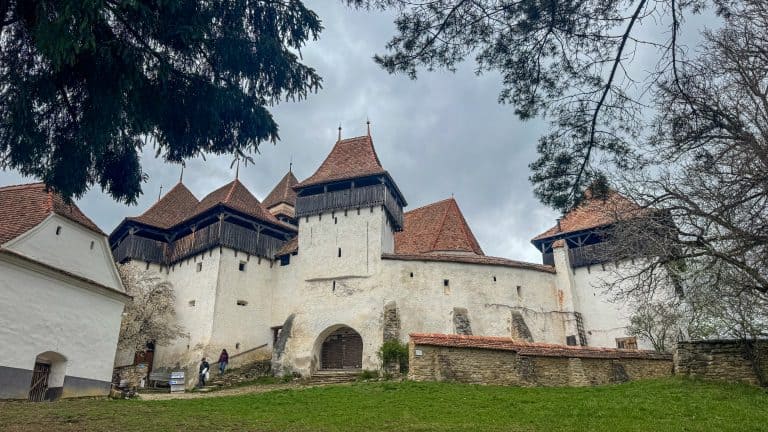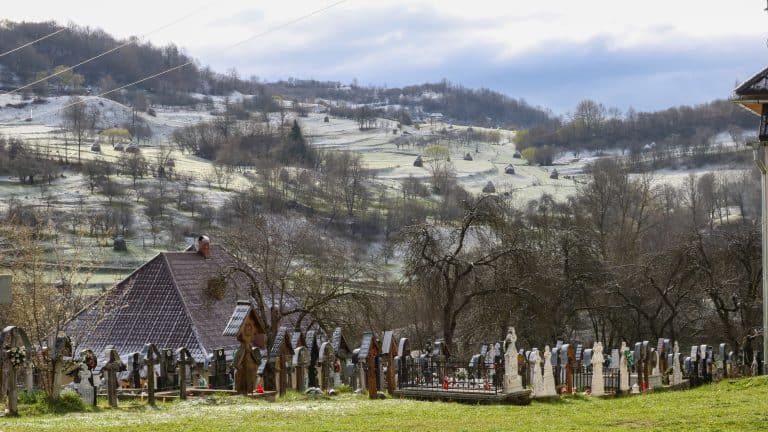Why Visit Romania? 9 Reasons It Belongs on Your Europe Itinerary
Freedom Years Travel contains affiliate links. If you make a purchase using one of the links below, we may receive compensation at no extra cost to you. We only recommend products and services we use and trust. Read our disclaimer for more information.
Is Romania worth visiting? After a 14-day road trip through cities, villages, and mountain passes, I can say without hesitation—yes. This fascinating country offers a rare mix of cultural depth, natural beauty, and character that’s hard to find elsewhere in Europe.
From UNESCO-listed churches and still-practised folk traditions to dramatic landscapes, wildlife, and walkable historic towns, Romania rewards independent travellers with unforgettable experiences—without the crowds or high price tags.
In this post, I’ll walk you through the most compelling reasons to visit—from living traditions and beautiful landscapes to fascinating recent history and a genuinely warm welcome.
1. Surprising Cities That Defy Expectations
Bucharest often gets a bad rap, but I found it utterly fascinating. It’s a city of contrasts—where Belle Époque architecture that earned it the nickname “Little Paris,” sits side by side with stark apartment blocks from the communist era.
The scale of Ceaușescu’s Palace of the Parliament is staggering. You can’t help but admire the craftsmanship, even as you’re reminded that it was built while many Romanians were going without heat or food. The mix of beauty, ambition, and disregard for ordinary lives says more about the country’s recent history than any museum ever could.
Cluj-Napoca has the kind of energy you’d expect from a university town. The Austro-Hungarian architecture gives it a different flavour to other Romanian cities, and the café scene is worth slowing down for.
Timișoara was another pleasant surprise. With its pastel façades and relaxed pedestrian zones, it felt immediately welcoming. There’s a creative buzz to the city, and it’s easy to see why it was named a European Capital of Culture.
In Transylvania, cities like Sibiu, Brașov, and Sighișoara offer compact centres that are easy to explore on foot. Their pastel town squares, towers, and medieval streets reflect centuries of Saxon presence, but these aren’t just museum pieces—they’re still lived in, with markets, cafés, and everyday routines unfolding against a historic backdrop.
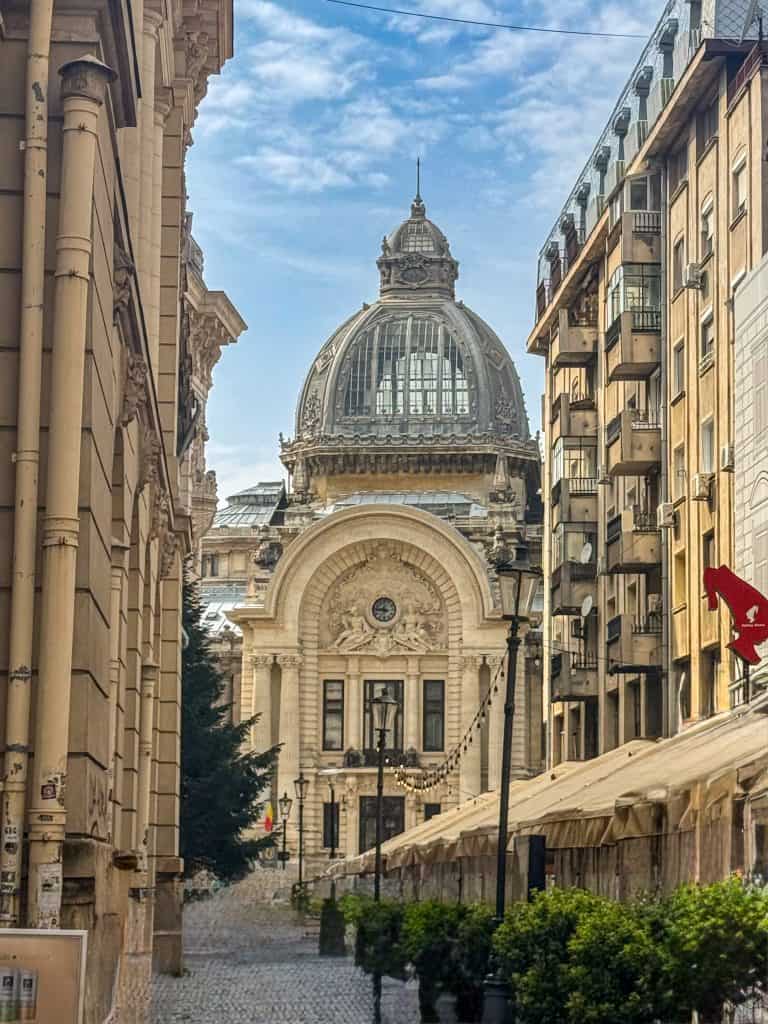
2. Traditions That Are Still a Way of Life
One of the most striking things about Romania—especially in the countryside—is how many traditional practices still shape daily life. These aren’t just performed for tourists. In rural areas, customs that have vanished elsewhere continue.
In Maramureș, I saw elderly women walking to church in full folk costume—embroidered blouses, woven skirts, headscarves. These weren’t staged performances or festival days. Just an ordinary Sunday morning. Hand-carved wooden gates marked homes, and haystacks were built with methods clearly unchanged for generations.
Craftsmanship runs deep too. Skills like weaving, woodcarving, and painting Easter eggs are often learned at home and passed down through families. In the right places, you can visit workshops or homes where people still make beautiful, practical things—nothing mass-produced, nothing just for tourists.
Architecture reflects tradition as well. Farmyard layouts, hand-built fences, and food preservation methods all speak to a slower, self-sufficient way of life. It’s not romanticised nostalgia—it’s how people live now.
These living traditions add a richness to rural Romania that’s hard to find elsewhere in Europe. There’s a quiet pride in keeping them going. As a visitor, it feels like a privilege to witness them—not as a show, but as everyday life.
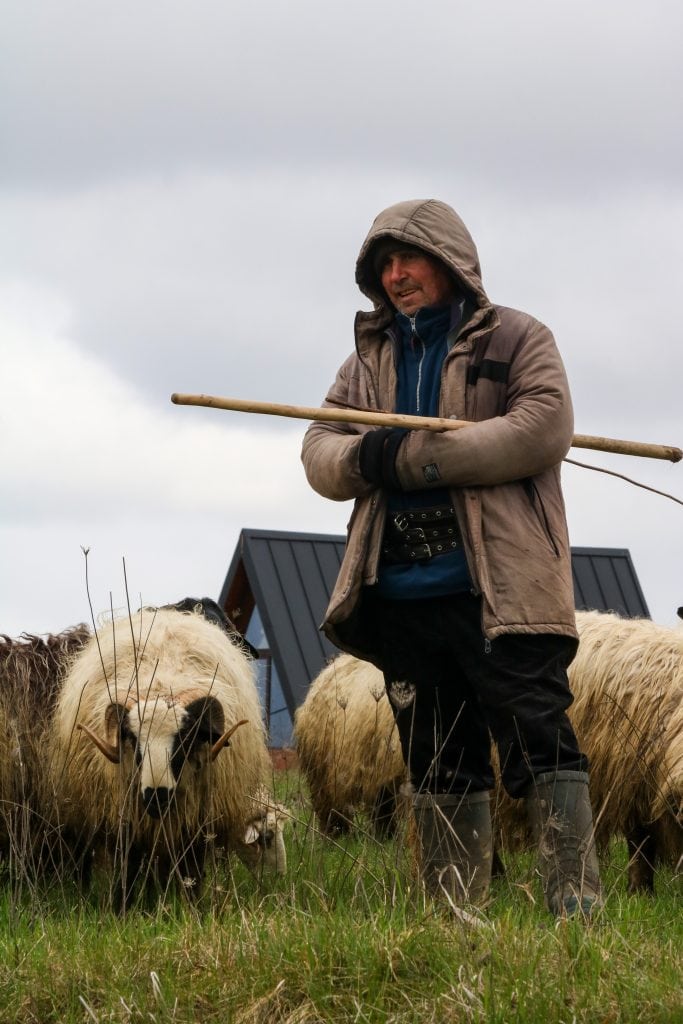
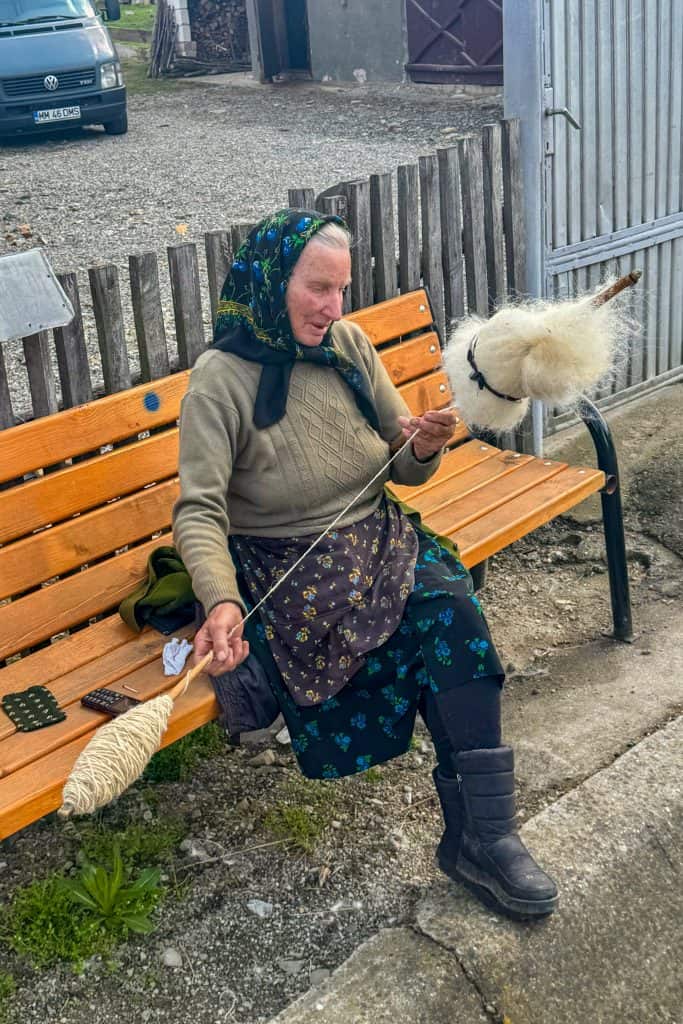
3. Faith, Folklore, and Myth in Everyday Life
Romania is among the most religious countries in Europe, with over 80% of people identifying as Eastern Orthodox. That’s not just a statistic—it’s something you see in daily life, from village chapels to churches in central Bucharest.
Even in the capital, I visited Orthodox churches that clearly part of everyday life. Locals dropped in to light candles or say a prayer. Inside, the churches were stunning—dark wood, gold detailing, and painted icons covering every surface. These aren’t museum pieces; they’re an integral part of daily life.
If you venture north to rural Maramureș, you’ll encounter the region’s famed wooden churches—tall structures with steep shingled roofs and finely carved details. Several of these are UNESCO World Heritage sites, recognised for their historical and architectural significance. Step inside, and the interiors are even more impressive, with walls covered from floor to ceiling in richly painted biblical scenes. These churches reflect both deep faith and skilled craftsmanship, and they remain central to village life.
We often passed Roma families walking along the roadside, the women dressed in layers of bright, traditional clothing. It was a reminder that not all of Romania looks or feels the same—different communities live with their own customs, often just a few kilometres apart.
Folklore and superstition still play a strong role in daily life in Romania—especially in rural areas and among older generations. You’ll hear stories of supernatural beings like strigoi (restless spirits that rise from the grave), werewolves, the grim reaper, and lele (dangerous female spirits said to steal children or cause illness). These aren’t tourist tales. They’re part of how people make sense of tradition, memory, and the unknown.
And of course, there’s the infamous legend of Dracula, which still draws tourists to Transylvania. While it doesn’t feature much in local life, the misty forests and medieval towns make it easy to see how such a story took hold.
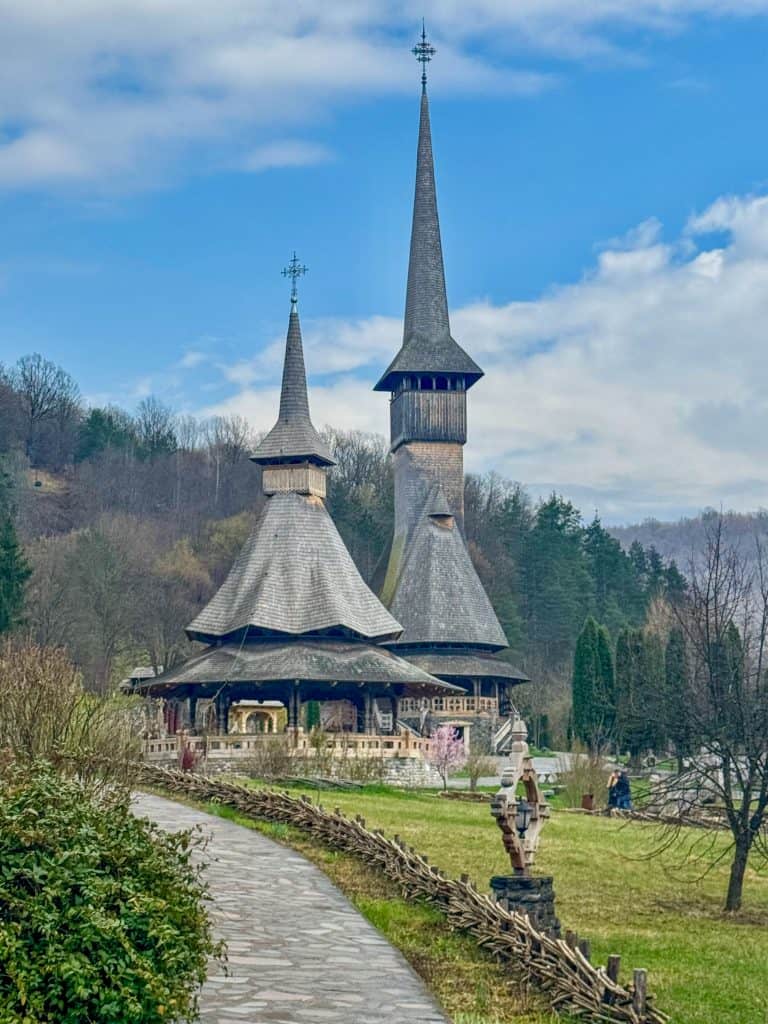
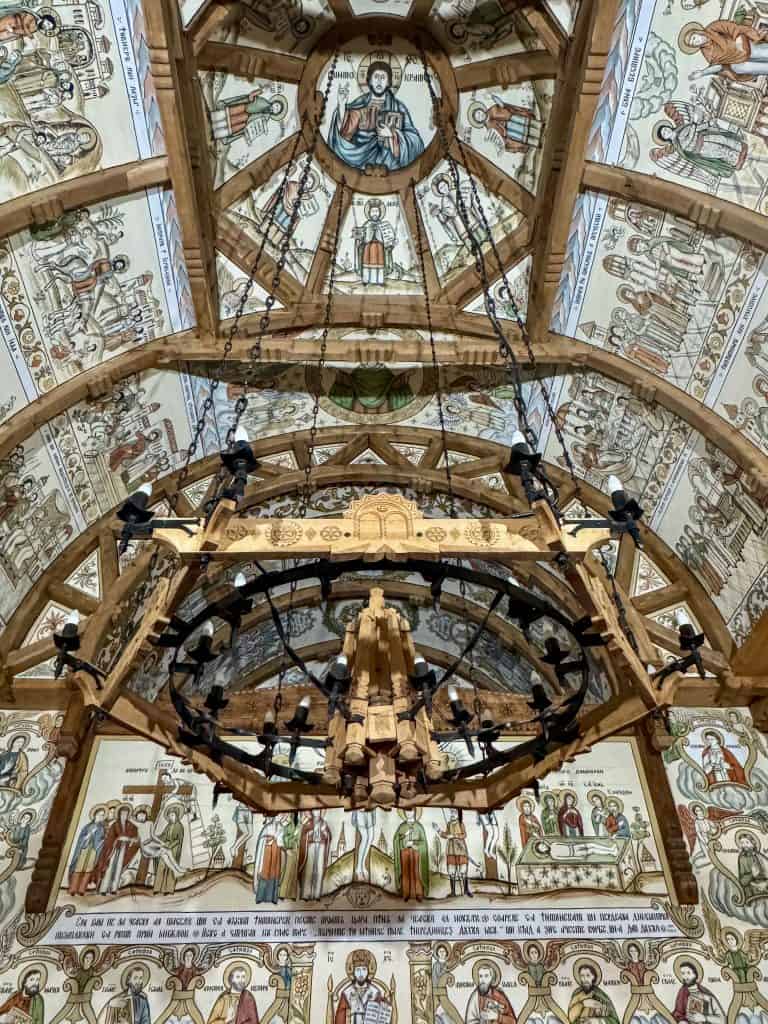
4. Echoes of the Communist Era
Of all the Eastern Bloc countries, Romania may have suffered the most under communism. Ceaușescu’s regime brought severe hardship—chronic food and fuel shortages, relentless surveillance, and a level of control that was both extreme and isolating. It has left a legacy that’s still visible today.
The scars are hard to miss. Rows of grey apartment blocks dominate city skylines, a reminder of forced urbanisation and state planning. In Bucharest, the Palace of the Parliament stands as Ceaușescu’s most excessive project—an enormous, lavish building constructed while many Romanians struggled to stay warm or find enough to eat. Touring its grand marble interiors is both fascinating and unsettling.
In the far north, the Sighet Museum—formally the Memorial of the Victims of Communism and of the Resistance —is one of the most sobering places I visited. Housed in a former prison, it tells the tragic stories of those who were imprisoned, exiled, or silenced during the regime. Many of the victims were people who, in another time, might have shaped a nation—instead, they were crushed by it.
Guided tours in Bucharest and other cities offer a more personal perspective, often led by people who lived through the communist era. Many Romanians are surprisingly open about their experiences, which makes this recent history feel close and relatable.
If you’re visiting other Central European countries, Romania’s story adds valuable context. The hardship was different here—more extreme and more isolated.
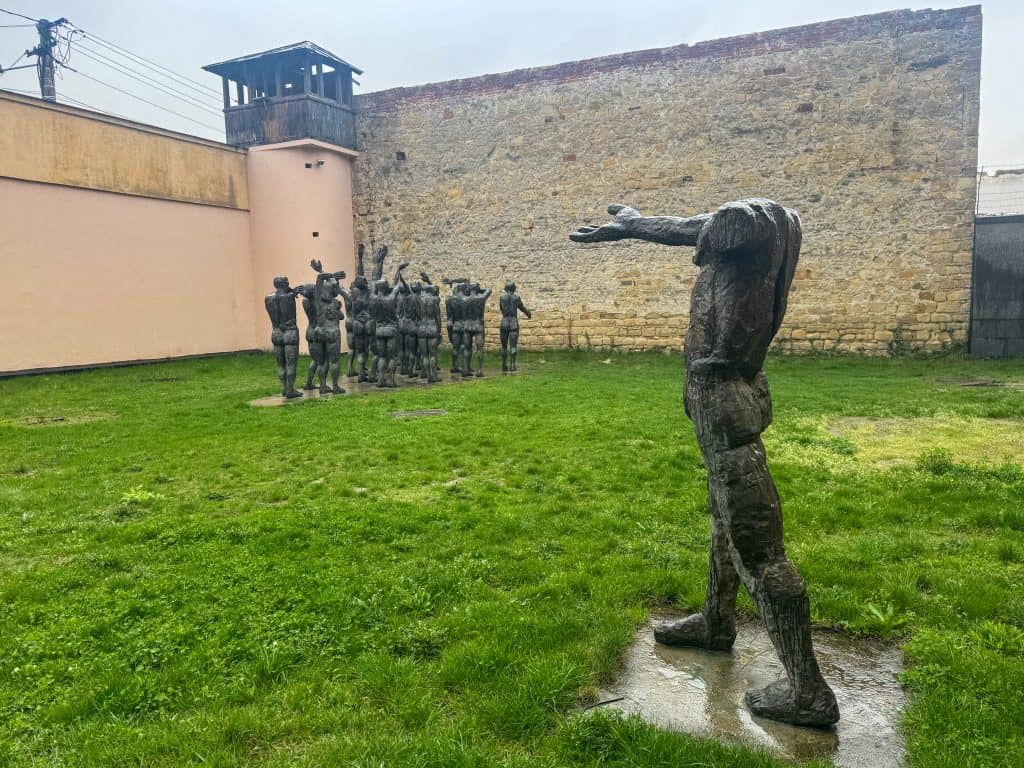
5. A Stronghold for Europe’s Brown Bears
Romania is home to the largest population of brown bears in Europe outside of Russia—but unlike Russia, the bears here are far more concentrated, especially in the Carpathian Mountains. That makes Romania one of the best places to (ethically) observe them in the wild.
Several operators run bear-watching experiences from hides deep in the forest, particularly around Zărnești and Brașov. These aren’t gimmicky or guaranteed—sightings depend on luck and patience—but they’re run with conservation in mind and offer a rare glimpse into Romania’s wild side.
I didn’t do a forest hide tour myself, but I did visit the Libearty Bear Sanctuary in Zărnești, which cares for bears rescued from captivity. Hearing the backstories of each bear—some kept in cages outside restaurants, others used for tourist photos—was confronting, but it made seeing them safe and free all the more meaningful.
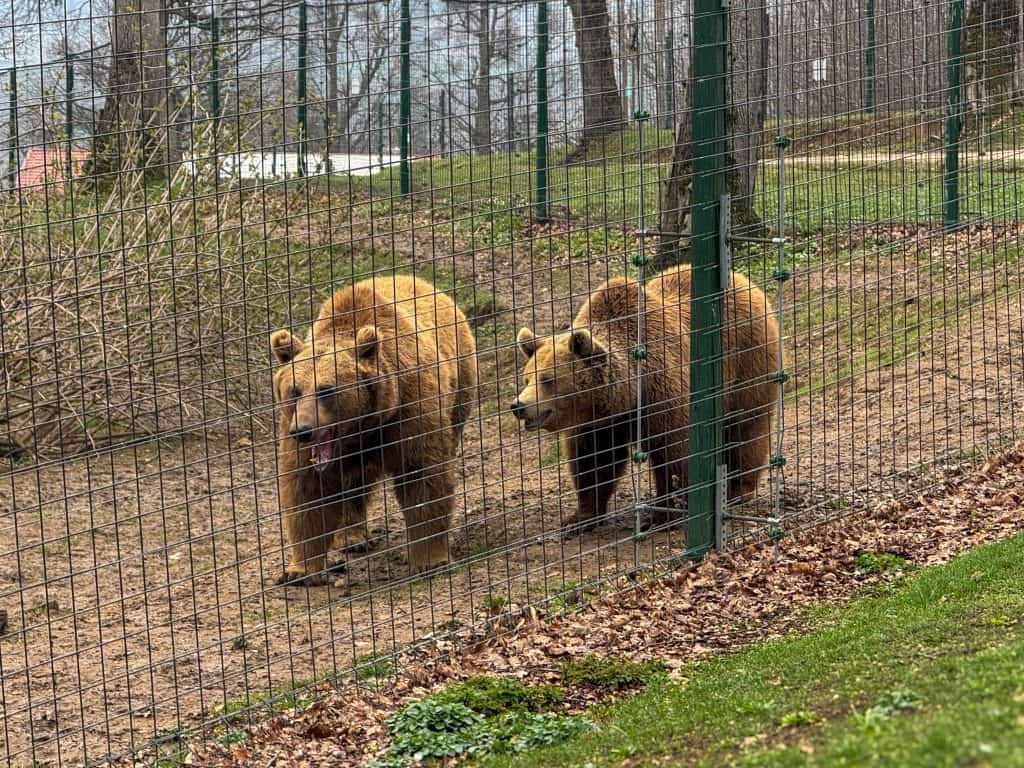
6. Forests, Mountains, and Roads Worth the Drive
Much of Romania is shaped by its natural landscape—forests, rolling hills, and the Carpathian mountains. Even if you’re not an avid hiker, the scenery alone adds depth to any road trip. It’s the kind of country where simply getting from A to B can become a highlight of the day.
The standout drive is the Transfăgărășan Highway, a dramatic stretch of winding road that cuts through the Făgăraș Mountains. It’s known as one of Europe’s most scenic roads but is a summer-only route (usually open June to October). If the conditions are right, it’s well worth the effort.
Elsewhere, long stretches of road are framed by thick forests that look like they’d be spectacular in autumn. I visited in spring, but even then, the wooded hills were lush and expansive.
You don’t need to seek out a national park or signposted trail to enjoy Romania’s scenery. It’s everywhere—outside the car window, at the edge of a village, or in the views from a hilltop church.
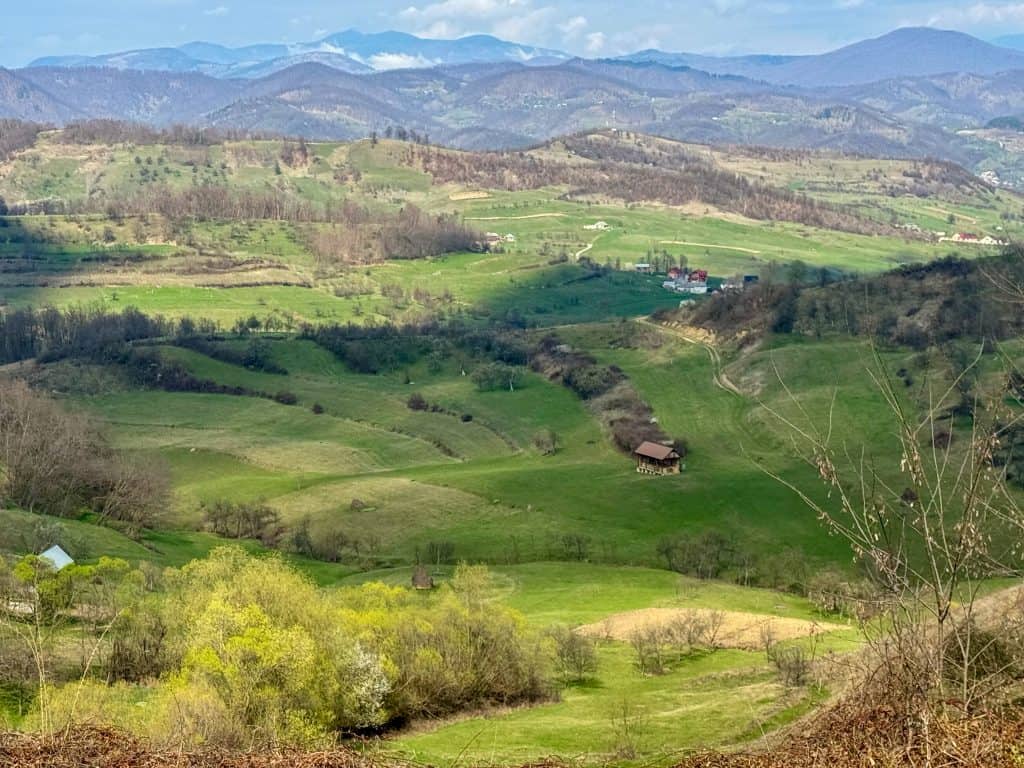
7. A Travel Experience That Won’t Break the Budget
One of the unexpected advantages of travelling in Romania is how far your money goes. Compared to Western Europe, and even some of its Central European neighbours, Romania remains remarkably affordable—especially outside of peak tourist hubs.
Accommodation, even in well-located hotels or guesthouses, tends to be good value. I stayed in several comfortable places with modern facilities, often for less than the price of a basic room in cities like Vienna or Paris. Dining out is similarly accessible—you can get a hearty two-course meal and a glass of local wine for a fraction of what you’d pay in most European capitals. Even in larger cities like Cluj-Napoca and Bucharest, prices felt reasonable.
Entry fees for museums, historical sites, and attractions are modest. If you’re planning a longer trip, like my 14-day road trip, it’s much easier to do so in Romania without having to constantly watch your budget.
Of course, costs vary depending on where and how you travel, but overall, Romania offers excellent value. And that affordability isn’t about cutting corners—it allows you to travel more slowly, stay longer, and experience more without compromising comfort.
8. Traditional Food and Generous Hospitality
Romanian food is hearty, unpretentious, and often surprisingly good. Influences from Hungarian, Turkish, Slavic, and Austrian cuisines give it a distinctive mix of flavours and textures. I took a food tour in Bucharest early in the trip—an ideal way to get a feel for local flavours and how food is tied to history and tradition. We sampled mici (grilled sausages), sarmale (cabbage rolls), and papanasi, the beloved fried doughnut served with sour cream and berry jam.
One of the most memorable meals was at Caru’ cu Bere, a grand restaurant in Bucharest with a stunning Art Nouveau interior, where we shared a huge pork knuckle with all the trimmings. But our best meal of a three-month Europe trip was at a small café in Cluj-Napoca—proof that great food doesn’t need a famous name.
The home-cooked meals stood out too. At our guesthouse in Breb, we were served generous portions of soup, stews, homemade desserts, and plenty of țuică and palincă. We were welcomed with biscuits and a shot on arrival—no fuss, just genuine hospitality.
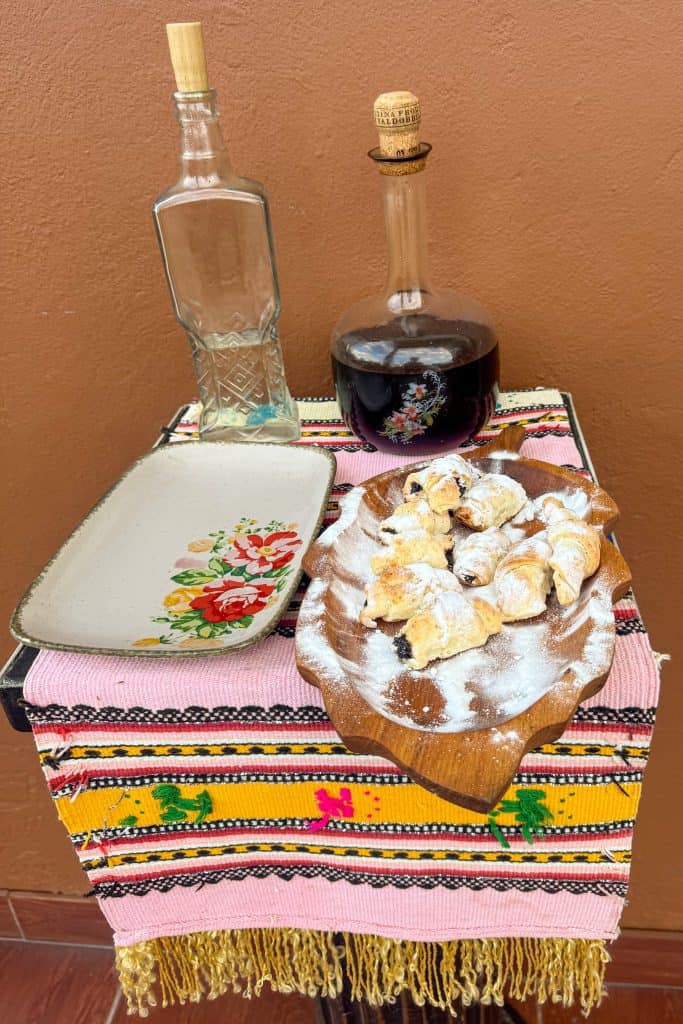
9. Welcoming Locals and Genuine Connections
While English isn’t always widely spoken—especially in rural areas—I consistently found people to be helpful and welcoming. Whether it was a host in Breb offering homemade soup and țuică, or a city guide sharing personal memories of life under communism, there was a real openness that made it easy to connect. You won’t always get polished service, but you’ll often find something better: genuine warmth and a willingness to share a story or a glass of something strong.
Why Romania Deserves a Spot on Your Travel List
Before visiting, I didn’t know much about Romania beyond Transylvania and a few clichés about Dracula. What we discovered instead was a country full of beautiful surprises—rich traditions, striking landscapes, compelling history, and genuinely warm hospitality.
It wasn’t the most obvious stop on our Europe trip, but it became one of the most memorable. Whenever people ask about the highlights of our three-month journey, Mr FYT doesn’t hesitate—he names Romania. And I can see why.
Romania might not be the obvious choice for your European journey but if you’re willing to take a closer look, it more than earns its place on your travel list.
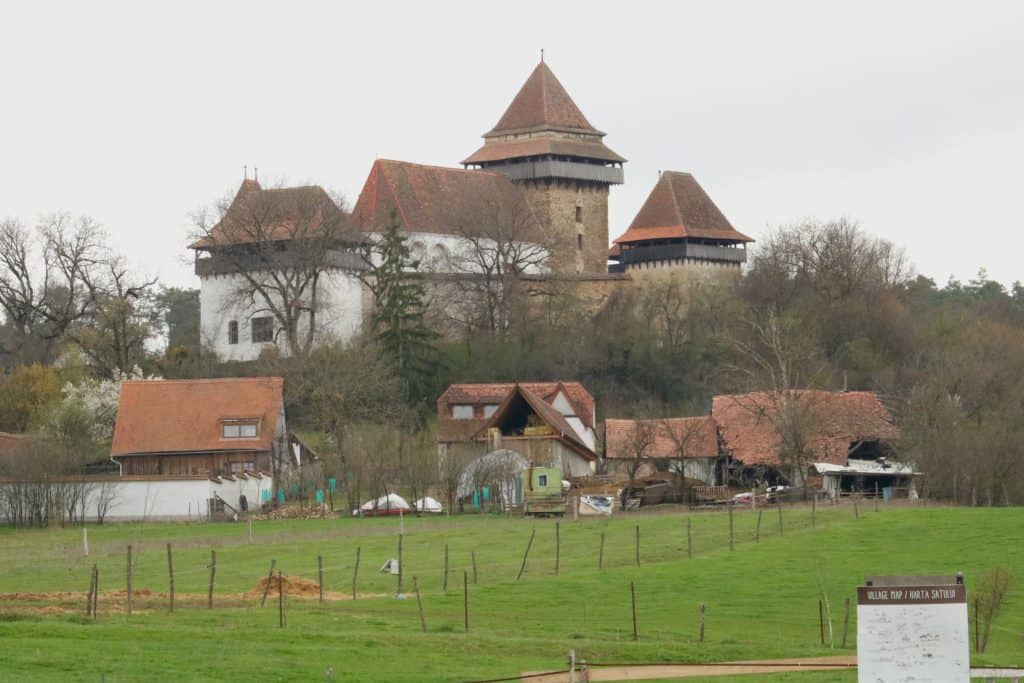
FAQs About Visiting Romania
Yes. Romania offers a unique mix of history, living traditions, natural beauty, and affordability that’s increasingly hard to find in Europe. Whether you’re interested in medieval towns, Orthodox churches, mountain drives, or traditional food, there’s a lot to experience—and far fewer crowds than in Western Europe.
You could see the highlights in 7–10 days, but two weeks allows for a deeper, more relaxed trip—especially if you want to explore beyond the cities. I spent 14 days on a road trip and still didn’t see everything.
Romania is known for its medieval towns (like Brașov and Sighișoara), the forested Carpathian Mountains, folklore and legends like Dracula, beautiful Orthodox churches, and its large brown bear population. It also has a complex communist history that’s still visible in many places.
Romania uses the Romanian Leu (RON), not the Euro. Many places accept card payments, especially in cities, but it’s a good idea to carry some cash in rural areas, markets, and smaller businesses. Currency exchange is straightforward and widely available.
Yes, Romania is a member of the European Union and joined the Schengen Area in March 2024 for air and sea travel.
Yes. I found Romania to be a safe and welcoming country to travel in. As with any destination, it’s worth taking standard precautions, especially in busy urban areas or when driving. People were helpful and often willing to chat, even if English wasn’t always widely spoken in rural areas.
No. Romania is one of the more affordable countries in Europe. Accommodation, food, and transport are all good value, especially outside the main cities. Even guided tours and entry fees tend to be reasonably priced.
Having a car gives you more flexibility—especially if you want to visit rural areas, smaller towns, or do scenic drives like the Transfăgărășan Highway. Trains and buses do exist, but they can be slower and less frequent than in other European countries.
Yes. In cities and tourist areas, many younger people speak English, and signage is often translated. In rural areas, English is less common, but a few phrases, patience, and friendly gestures go a long way.
Spring (April–June) and autumn (September–October) are ideal for comfortable weather, fewer crowds, and beautiful scenery—especially if you’re interested in forest drives or photography. Summer can be hot, while some mountain roads (like the Transfăgărășan) are closed in winter.
The Dracula legend has its roots in the real-life figure of Vlad the Impaler (Vlad Țepeș), a 15th-century ruler of Wallachia known for his harsh punishments and military campaigns. While Vlad wasn’t a vampire, his violent reputation helped inspire Bram Stoker’s fictional Count Dracula. Stoker is widely believed to have used an illustration of Bran Castle, as a reference when describing Dracula’s castle in his novel.
Today, Bran Castle is one of Romania’s most visited attractions.

